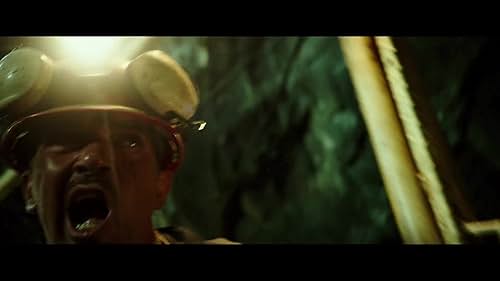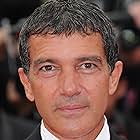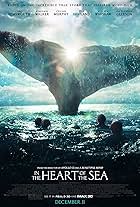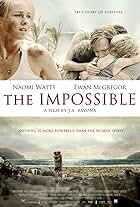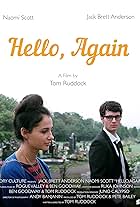Based on the real-life event, when a gold and copper mine collapses, it traps 33 miners underground for 69 days.Based on the real-life event, when a gold and copper mine collapses, it traps 33 miners underground for 69 days.Based on the real-life event, when a gold and copper mine collapses, it traps 33 miners underground for 69 days.
- Awards
- 8 wins & 7 nominations
Storyline
Did you know
- TriviaDue to lack of work, the rescued miners took roles in the production of the movie being filmed about its history in Copiapó, Chile.
- GoofsA magnet was not used to get the broken drill bit out. In fact they had to manufacture on site what's called a "spider drill" which had an open spiral toothed design at the end of the drill to try to surround the broken bit. Using the pressure of down force, the teeth would collapse around the bit to capture it.
- Quotes
Mario Sepúlveda: That's not a rock, that's the heart of the mountain. She finally broke.
- Crazy creditsThe last scene shows, in black and white, the real 33 miners gathered on a beach, and credits each of them individually.
- ConnectionsFeatured in Conan: Antonio Banderas/Charlyne Yi/Ed Gamble (2015)
- SoundtracksJailhouse Rock
Written by Jerry Leiber and Mike Stoller
Published by Sony/ATV Tunes LLC and Elvis Presley Music (Administered by Songs of Imagem Music)
Featured review
Greetings again from the darkness. How do you structure a film based on a true story that lasted 69 days, occurred 5 years ago, and was followed live on TV by half of the global population? Director Patricia Riggen (Girl in Progress, 2012) delivers a film designed to tug on heartstrings, and is based on the book "Deep Down Dark" from Hector Tobar, as well as interviews with the key players.
In 2010, the San Jose copper/gold mine collapsed trapping 33 miners more than 2300 feet under tons of rubble and an unstable rock that dwarfed the Empire State Building. Through some pretty solid special effects, we are there for the collapse. It's this segment and the immediate reactions from the miners that provide the film's best segment. We feel the miner's sense of panic and doom as they begin to come to grips with their plight.
The film rotates between three struggles: the isolation of the miners struggling to survive, the tent city populated by their families struggling to maintain hope, and the Chilean government struggling with the politics and public relations of a rescue mission. From a character standpoint, each of these three segments is given a face. Antonio Banderas as Mario becomes the focal point of the miners. He searches for an escape route, takes charge of the (very limited) food rations, and acts as referee and light of hope in an extremely volatile situation. Juliette Binoche (yes the French actress) is Maria, the sister of one of the trapped miners and the most assertive of those pushing the government to attempt a rescue. Rodrigo Santoro plays Laurence Goldborne, Chile's Minister of Mining, and the one who pushes the government to move forward with the costly rescue mission.
Other key characters include Bob Gunton as Chile's President Pinera, Lou Diamond Phillips as "Don Lucho", the safety inspector, Gabriel Byrne as the chief engineer, James Brolin as Jeff Hart (leading the U.S. drilling team), Naomi Scott as Mario's wife, and three of the other miners: Oscar Nunez, Mario Casas, and Juan Pablo Raba.
The most bizarre segment comes courtesy of miner hallucinations. It's a fantasy-infused Last Supper sequence that plays out to the sounds of a Bellini opera, while the food and drink flow and the family members join in the joy. It's not difficult to imagine the brain taking these poor gentlemen to such places of mental torture.
As if the approach is to make the most viewer-friendly buried miner film possible, we aren't witness to much underground conflict, and the internal bickering within the Chilean government officials is kept to a minimum. We do get to see the media circus that occurred during the ordeal of course, most of us witnessed it in real time.
Director Riggen has delivered a film that taps into the multitude of emotions for the different groups of people, rather than concentrating on the miserable situation of the miners. It's a challenge to keep us interested in a true story of which we all know the ending, but most viewers will stay engaged with the characters. It should also be noted that the minimalistic score is some of the last work from the late, great James Horner.
In 2010, the San Jose copper/gold mine collapsed trapping 33 miners more than 2300 feet under tons of rubble and an unstable rock that dwarfed the Empire State Building. Through some pretty solid special effects, we are there for the collapse. It's this segment and the immediate reactions from the miners that provide the film's best segment. We feel the miner's sense of panic and doom as they begin to come to grips with their plight.
The film rotates between three struggles: the isolation of the miners struggling to survive, the tent city populated by their families struggling to maintain hope, and the Chilean government struggling with the politics and public relations of a rescue mission. From a character standpoint, each of these three segments is given a face. Antonio Banderas as Mario becomes the focal point of the miners. He searches for an escape route, takes charge of the (very limited) food rations, and acts as referee and light of hope in an extremely volatile situation. Juliette Binoche (yes the French actress) is Maria, the sister of one of the trapped miners and the most assertive of those pushing the government to attempt a rescue. Rodrigo Santoro plays Laurence Goldborne, Chile's Minister of Mining, and the one who pushes the government to move forward with the costly rescue mission.
Other key characters include Bob Gunton as Chile's President Pinera, Lou Diamond Phillips as "Don Lucho", the safety inspector, Gabriel Byrne as the chief engineer, James Brolin as Jeff Hart (leading the U.S. drilling team), Naomi Scott as Mario's wife, and three of the other miners: Oscar Nunez, Mario Casas, and Juan Pablo Raba.
The most bizarre segment comes courtesy of miner hallucinations. It's a fantasy-infused Last Supper sequence that plays out to the sounds of a Bellini opera, while the food and drink flow and the family members join in the joy. It's not difficult to imagine the brain taking these poor gentlemen to such places of mental torture.
As if the approach is to make the most viewer-friendly buried miner film possible, we aren't witness to much underground conflict, and the internal bickering within the Chilean government officials is kept to a minimum. We do get to see the media circus that occurred during the ordeal of course, most of us witnessed it in real time.
Director Riggen has delivered a film that taps into the multitude of emotions for the different groups of people, rather than concentrating on the miserable situation of the miners. It's a challenge to keep us interested in a true story of which we all know the ending, but most viewers will stay engaged with the characters. It should also be noted that the minimalistic score is some of the last work from the late, great James Horner.
- ferguson-6
- Nov 11, 2015
- Permalink
- How long is The 33?Powered by Alexa
Details
- Release date
- Countries of origin
- Official sites
- Languages
- Also known as
- 33 Người Thợ Mỏ
- Filming locations
- Nemocón, Colombia(San José Mine)
- Production companies
- See more company credits at IMDbPro
Box office
- Budget
- $26,000,000 (estimated)
- Gross US & Canada
- $12,227,722
- Opening weekend US & Canada
- $5,787,266
- Nov 15, 2015
- Gross worldwide
- $27,972,023
- Runtime2 hours 7 minutes
- Color
- Sound mix
- Aspect ratio
- 2.35 : 1
Contribute to this page
Suggest an edit or add missing content


